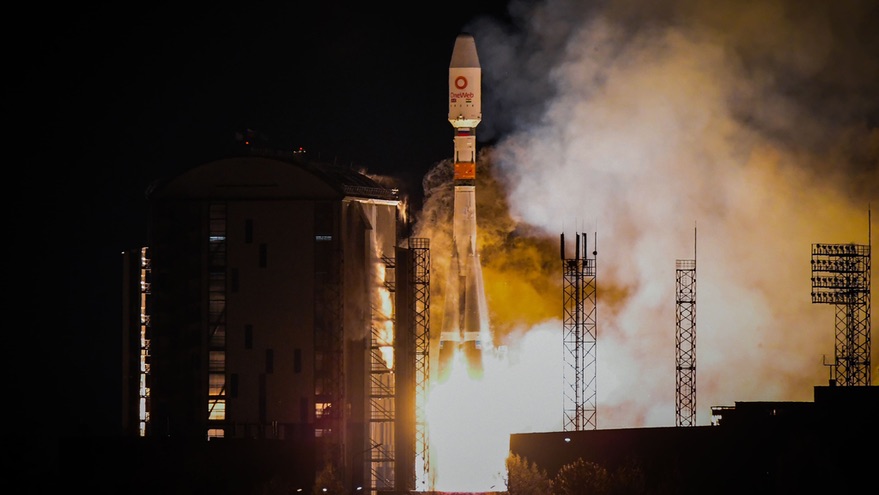WASHINGTON — OneWeb resumed deployment of its broadband satellite constellation with a Dec. 18 launch of 36 satellites, the first since the company emerged from Chapter 11 bankruptcy.
A Soyuz-2.1b rocket lifted off from the Vostochny Cosmodrome in Russia at 7:26 a.m. Eastern. The rocket’s Fregat upper stage released the 36 satellites in nine sets of four satellites each, maneuvering between deployments, completing the process nearly four hours after liftoff.
The Fregat deployed the satellites in orbits at an altitude of 450 kilometers. The spacecraft, built by the Airbus-OneWeb joint venture OneWeb Satellites, will use their onboard propulsion to move into their final orbits at an altitude of 1,200 kilometers. They will join 76 satellites previously launched on three previous Soyuz flights.
The launch was the first for OneWeb since a March 21 launch from the Baikonur Cosmodrome that placed 34 satellites into orbit. Six days later, the company filed for Chapter 11 bankruptcy in U.S. federal court, citing an inability to raise funding because of the pandemic.
A group led by Indian telecom company Bharti Global and the British government submitting a winning bid of $1 billion for OneWeb’s assets in July, a deal that closed Nov. 20. The company, under new ownership, also hired Neil Masterson, a former co-chief operating officer at Reuters, as its new chief executive.
This launch is the first under a revised contract with Arianespace concluded in September. That contract covers 16 Soyuz launches at a pace of roughly once a month to deploy the 648-satellite constellation.
“We felt that the important thing to do was to get a launch back up as soon as possible so that potential partners could see that OneWeb was back,” said Chris McLaughlin, chief of government, regulation and engagement at OneWeb, in an interview just as the last sets of satellites were being deployed. “That will lead those who were considering OneWeb to put us back on their shopping list.”
The company is just starting to ramp up sales efforts, having disbanded its original sales team when it filed for Chapter 11. McLaughlin said that the company is working in several markets, including aviation, maritime and defense applications.
The OneWeb Satellites factory in Florida is back to full operation, he said, producing two satellites a day. That keeps OneWeb on track to have enough satellites in orbit to provide service at latitudes above 50 degrees north by the fall of 2021, and have the full constellation in operation as soon as the middle of 2022.
To achieve that goal, the company needs to raise additional funding. Sunil Bharti Mittal, executive chairman of OneWeb, said Dec. 9 that the company needed to raise $2.5 billion, nearly half of which had already raised. He said he was confident that OneWeb can raise the remaining funding.
“We have a number of financial institutions who already want to put money in,” McLaughlin said. He added that OneWeb has been approached by two “large GEO” satellite operators that he declined to identify who are also interested in investing in OneWeb. The Financial Times reported OneWeb could close a $400 million round as soon as January.
“It’s been a long, hard time,” McLaughlin said. “We’re back to having competition in LEO.”
